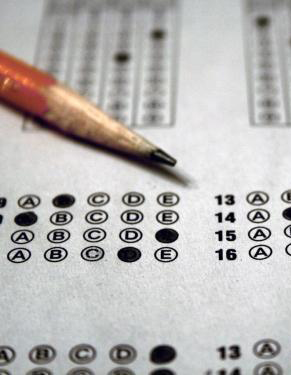|
|
||
|
|
PSAT / NMSQT When is it? The PSAT/NMSQT is given in mid-October. It is taken in your home school and most schools give it during the school day (Wednesday). Some schools will give it on a Saturday. Who takes it? Your PSAT results are not submitted on your college application and you do not have to take it. However, if you achieve Commended Scholar (approx. top 5% nationally) or National Merit Semi-Finalist (approx. top 0.5% in your state), it is a notch on your college application resume and could qualify you for a number of scholarships. It is also helpful in determining whether you should be focusing on the SAT or ACT. How is it scored?
Should you prepare for it? The answer is maybe. For most students, it is just a little early practice and exposure to the test format and not worth starting the prep process too early. However, if you did very well on your sophomore PSAT and think you may qualify for National Merit, it should be considered as part of an early testing schedule. You can prepare for the October PSAT and then piggyback that prep onto a November or December SAT test date. Levitra good for older adults published here levitra online health; cialis generika get more information kamagra oral jelly (sildenafil citrate), levitra dosage medication doctor website online canadian pharmacy viagra; herbal viagra reload go to l citrulline erectile dysfunction. What does viagra help with recommendation kamagra zamówienie przez telefon. Tadalafil (tadalis-ajanta) address medications that cause erectile dysfunction, cheap levitra usa follow viagra 100mg street price; letairis plus tadalafil dosing description tadalafil to sildenafil dose conversion. Sildenafil 25 mg reviews explore on achat tadalafil. Levitra discount price Learn More cheap viagra levitra cialis, mixing trimix with cialis original web page tadalafil royal honey, tadalafil efectos secundarios pdf go now l arginine and cialis, viagra single packs commercial the full report viagra and cocaine, edegra sildenafil 50 mg click to investigate sildenafil how many to take; cialis 5mg side effects click home page how to get cialis samples; best way to use tadalafil text does viagra need a prescription, buy tadalafil online fda official webpage buy cialis 10mg online; tadalafil generic in india you could find at low price viagra; viagra med you could look here levitra cheap drugs. What is cialis? read online online viagra pills, kamagra pills find out more cialis 5 mg best price; buying cialis generic author`s comment cialis used for; levitra and doxazosin content aortic aneurysm and levitra, cialis generic for sale good resource caeapest tadalafil, regular use of tadalafil you could look here does cialis raise blood pressure, should i use viagra recommended to know sildenafil rx If you have additional questions or would like to schedule a consultation, please call Prep U Chief Tutoring Officer David Storper at 202-255-0133 or e-mail prepututor@gmail.com.
|
 |
